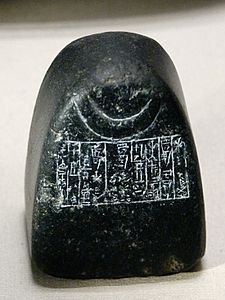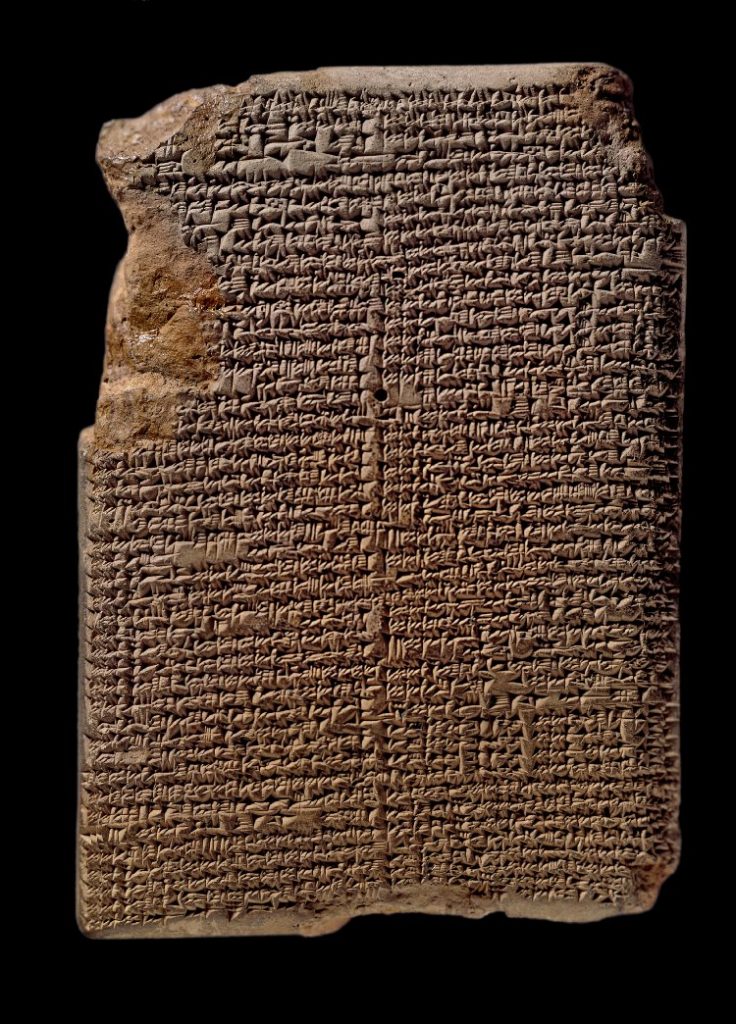As you may have already noticed, this website is largely focused on the exploration of the 19 year cycle of the sun and the moon known as the Metonic cycle, and its place in history and the Druidic tradition.
In the previous articles in this series we have discussed ancient monuments and artefacts that measure the movements of the sun and moon, and suggest that humans have possessed knowledge of this cycle from the very earliest of times.
In this post I would like to talk about the Babylonians who as far as we know were the fist to document the ancient knowledge of the heavens, and the 19 year pattern that came to be known as the Metonic cycle

The Umma calendar of Shulgi (21st century BC) is the earliest example of a calendar which formed the basis of the Babylonian calendar. It was an earlier Sumerian calendar system that was used by the independent of city states of Umma, Girsu, Nippur, Ur, Drehem and Irisagrig. However each city state had its own month names and method for deciding when to insert the 13th intercalary month. The point is though that throughout ancient Mesopotamia, civilisations were basing their calendars on the movements of the sun and moon, and adding in additional months in order to keep the month names in line with the seasons, just as they were over a thousand years before in Europe.
In Babylon, originally it was the king who would decide when to add in the intercalary month. This situation was not very satisfying so the Babylonian astronomers, who were known as Chaldaens, began to look for a better solution. The Chaldaens had been making observations and keeping records for centuries. Sometime in the 8th century BC they made the discovery that 235 lunation cycles was almost the same as 19 solar years, and the Chaldaens determined that seven out of the nineteen years ought to have an extra month. From this point forward the king would still announce the inclusion of the extra month, but he would be advised by an astronomer. Then, when the Persian king Cyrus the Great captured Babylon in 539BC priestly officials took over the duty of announcing the extra month, and they began to look for a standard pattern for the inclusion of the extra month. In 503BC Darius I the Great introduced the system, dictating that the extra months should be in the 3rd, 6th, 8th, 11th, 14th, 17th and 19th years.
By around 432BC Greek astronomer Meton, along with Euctemon discovered the same 19 year cycle based on his observations of the summer solstice that year. The foundations of Meton’s observatory in Athens are still visible to this day. Then in 331BC Alexander the Great captured Babylon and ordered that the astronomical diaries of the Chaldaens be translated into Greek. This knowledge was immediately applied in Greece. Callippus of Cyzicus recalculated the lunar month and proposed a new calendar, in which he applied a new cycle that became known as the Callippic cycle. A Callippic cycle is 76 years long, or four Metonic cycles, with one day deducted from the 4th cycle. Callippus’ new era which was used by later Greek astronomers began on the 28th June 330BC, only eight months after the capture of Babylon.
For the Babylonians a month did not have a specific number of days and the month began with the first sighting of the new moon (2 or 3 days after the astronomical new moon). Counting from the new moon every seventh day was consider a holy day. Certain activities were prohibited, and offerings were made to the appropriate deities. On the 7th it was Marduk and Ishtar, Ninlil and Nergal on the 14th, Sin and Shamash on the 21st, and Enki and Mah on the 28th. The lunation cycle of 29 or 30 days basically contained 3 weeks of 7 days, plus a fourth week of 8 or 9 days, braking the continuous 7-day cycle. There was also the festival of Sapattu or Sabattu each month from the Sumerian sa-bat meaning “mid-rest”. This was the celebration of the full moon.

A compendium of astronomical data recorded since the earliest of times
Other festivals are known too, such as Akitu, the new year celebrations that occurred close to the spring equinox. We also know that the character or theme of each festival, ritual or feast was determined by six factors.
- The phase of the moon
- The phase of the annual agricultural cycle
- Equinoxes and solstices
- The mythos of the city and its divine patrons
- The success of the reigning Monarch
- Commemoration of historical events (founding, invasion, re-founding etc)
Because the Druidcraft calendar is based on the same Metonic cycle used by the Babylonian calendar, it may be possible to apply the knowledge of the Babylonian festivals to our own study of calendars and Druidry. And of course the Babylonian calendar is not the only Metonic Calendar. Another important and related calendar is that of the Hebrews, which is still used for the calculation of Easter. In future articles we will look at how we moved from the ancient observable Metonic calendar, to the abstract Gregorian calendar that we use today.
Leave a Reply
You must be logged in to post a comment.